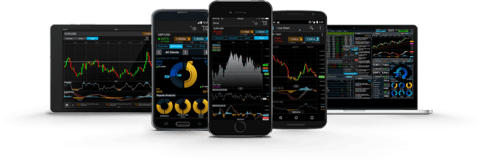The Power of Prediction: Forecasting Techniques in CFD Trading

In the dynamic world of Contract for Difference (CFD) trading, the ability to predict market movements can significantly enhance trading strategies and outcomes. Prediction is not about having a crystal ball but rather utilizing various forecasting techniques to make informed decisions. This article delves into the power of prediction in CFD trading, exploring key forecasting techniques that traders can employ to navigate the financial markets effectively.
Understanding CFD Trading
CFD trading allows traders to speculate on the price movements of underlying assets such as stocks, commodities, indices, and currencies without owning the actual asset. The profit or loss is calculated based on the difference between the opening and closing prices of the contract.
Given the leverage involved in CFD trading, accurate predictions are crucial. Leverage amplifies both potential profits and losses, making effective forecasting techniques indispensable for success in this high-risk, high-reward environment.
The Importance of Forecasting in CFD Trading
Forecasting in CFD trading involves analyzing historical data, market trends, and other relevant information to predict future price movements. Accurate forecasts enable traders to:
Make Informed Decisions: By predicting market trends, traders can make more informed decisions about when to enter or exit trades.
Manage Risks: Effective forecasting helps in identifying potential risks, allowing traders to implement risk management strategies such as stop-loss orders.
Maximize Profits: Accurate predictions can lead to timely trades, maximizing profit potential by capitalizing on favorable market conditions.
Key Forecasting Techniques in CFD Trading
1. Technical Analysis
Technical analysis is a popular forecasting technique that involves studying historical price charts and trading volumes to identify patterns and trends. Key tools and indicators used in technical analysis include:
Moving Averages (MA): Moving averages smooth out price data to identify trends over a specific period. Common types include Simple Moving Average (SMA) and Exponential Moving Average (EMA).
Relative Strength Index (RSI): RSI measures the speed and change of price movements, helping traders identify overbought or oversold conditions.
Bollinger Bands: These bands consist of a moving average and two standard deviations. They help traders identify volatility and potential reversal points.
Candlestick Patterns: Candlestick charts display price movements in a visually appealing manner. Traders look for patterns such as doji, hammer, and engulfing patterns to predict future price movements.
2. Fundamental Analysis
Fundamental analysis involves evaluating economic, financial, and other qualitative and quantitative factors that influence an asset’s price. Key elements include:
Economic Indicators: Data such as GDP growth, employment rates, and inflation can impact market sentiment and asset prices.
Company Financials: For CFDs on stocks, analyzing a company’s financial health through its balance sheet, income statement, and cash flow statement is crucial.
News and Events: Political events, economic policies, and corporate announcements can significantly influence market prices.
3. Quantitative Analysis
Quantitative analysis uses mathematical models and statistical techniques to forecast future price movements. This approach involves:
Algorithmic Trading: Using computer algorithms to execute trades based on predefined criteria. These algorithms can process vast amounts of data and execute trades at high speeds.
Machine Learning: Employing machine learning models to analyze historical data and identify patterns that human traders might miss. These models can adapt and improve their predictions over time.
4. Sentiment Analysis
Sentiment analysis involves gauging market sentiment by analyzing news articles, social media posts, and other sources of public opinion. Tools like natural language processing (NLP) can help traders understand the general mood of the market, providing insights into potential market movements.
Conclusion
The power of prediction in CFD trading cannot be overstated. By employing various forecasting techniques such as technical analysis, fundamental analysis, quantitative analysis, and sentiment analysis, traders can make more informed decisions, manage risks, and maximize profits. While no forecasting method guarantees success, combining multiple approaches and continuously refining them can significantly enhance a trader’s ability to navigate the complex and ever-changing financial markets. Embrace the power of prediction and elevate your CFD trading strategy to new heights.